Do you slouch without even realizing it? Feel discomfort in your shoulders or lack that powerful, upright look? The truth is, poor posture doesn’t just affect your spine—it impacts your presence, confidence, and even the way people perceive you.
Luckily, the solution lies behind you—literally. Strengthening your back muscles is the fastest and most sustainable way to improve posture, relieve tension, and radiate confidence. Whether you’re an office worker, a gym-goer, or someone just starting out, these 9 expert-approved back exercises will straighten your spine, broaden your frame, and boost your self-assurance in no time.
Let’s get into it.

Table of Contents
Perks of Doing Back Exercises Regularly
- Improved Posture
Strengthens key muscles that help you stand taller and sit straighter.- Instant Confidence Boost
A strong, upright posture makes you look more dominant, energized, and self-assured.- Relief from Back & Neck Pain
Corrects muscle imbalances and reduces discomfort from sitting or slouching.- Enhanced Athletic Performance
A stronger back improves your lifting power, stability, and sports performance.- Balanced Physique
Builds a well-proportioned upper body, preventing that “forward hunch” look.- Better Core Support
Many back exercises engage your core, improving total-body strength and stability.- Injury Prevention
Strong posterior muscles protect your spine, shoulders, and joints from overuse or strain.- Improved Breathing
A more open chest and aligned spine help your lungs expand better.- Boosted Metabolism
Big compound lifts like deadlifts recruit large muscle groups, which burn more calories.- Better Everyday Functionality
From lifting groceries to carrying kids—your back strength supports daily movements with ease.
Do’s and Don’ts of Back Workouts
| Do’s | Don’ts |
|---|---|
| Warm up your back and shoulders before lifting | Don’t lift heavy without proper form |
| Focus on controlled, slow movements | Don’t rush through reps |
| Engage your core during all back exercises | Don’t arch or round your lower back excessively |
| Maintain a neutral spine throughout | Don’t use momentum to lift weights |
| Incorporate both compound and isolation moves | Don’t neglect mobility and flexibility |
| Use progressive overload to build strength | Don’t stick to the same routine forever |
| Balance back workouts with chest & core training | Don’t only train the “mirror muscles” (front side) |
| Stretch your chest and shoulders post-workout | Don’t ignore tight muscles causing poor posture |
| Start with bodyweight if you’re a beginner | Don’t compare your progress with others |
What Happens After 30 Days of Back Exercises
| Day | Visible & Internal Changes |
|---|---|
| Day 1–7 | – Muscle activation begins – Increased body awareness – Slight posture improvements noticed while sitting or standing |
| Day 8–14 | – Better mind-muscle connection – Reduced stiffness in back and neck – Slight boost in daily energy levels |
| Day 15–21 | – Noticeable strength in basic movements (e.g., lifting objects) – Improved range of motion – Confidence starts to build |
| Day 22–30 | – More upright posture becomes natural – Increased core and back muscle definition – Significant confidence boost and less back discomfort |
Top 9 Back Exercises To Do
1. Deadlifts

Why it works: Deadlifts are the king of compound exercises. They hit your entire posterior chain—lower back, glutes, hamstrings, and traps—making them ideal for improving overall posture and strength.
How to do it:
- Stand with feet shoulder-width apart.
- Grip the barbell with hands just outside your knees.
- Keep your spine neutral and engage your core.
- Lift the bar by pushing through your heels and driving your hips forward.
Bonus tip: Start light and perfect your form to avoid injury and maximize posture benefits.
2. Bent-Over Rows
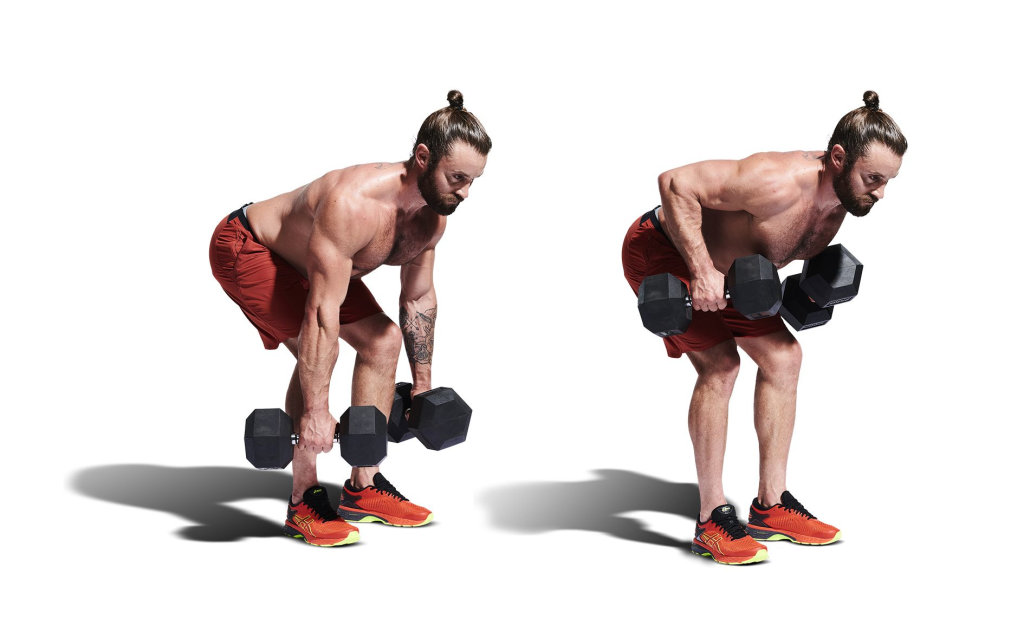
Why it works: This exercise targets the lats, rhomboids, and lower traps—muscles essential for pulling your shoulders back and maintaining upright posture.
How to do it:
- Hold a barbell or dumbbells with a pronated grip.
- Hinge at your hips with a slight bend in your knees.
- Pull the weight toward your waist, squeezing your shoulder blades.
Trainer tip: Avoid rounding your back. A flat back ensures you’re working the right muscles and not stressing the spine.
3. Pull-Ups (or Assisted Pull-Ups)

Why it works: Pull-ups build the upper back, helping to create a V-taper physique and naturally improving the way you stand and carry yourself.
How to do it:
- Grab a pull-up bar with an overhand grip.
- Pull your chest to the bar while engaging your lats.
- Lower slowly with control.
Pro hack: If full pull-ups are tough, use resistance bands or an assisted machine to build strength progressively.
4. Face Pulls

Why it works: One of the most underrated exercises for posture, face pulls strengthen the rear delts and rotator cuff—key muscles for healthy shoulders and a balanced upper body.
How to do it:
- Use a cable machine with a rope attachment.
- Pull the rope toward your face while keeping elbows high.
- Squeeze your upper back at the top.
Posture boost: Doing face pulls 3x a week can drastically reduce rounded shoulders from prolonged sitting.
5. Superman Hold
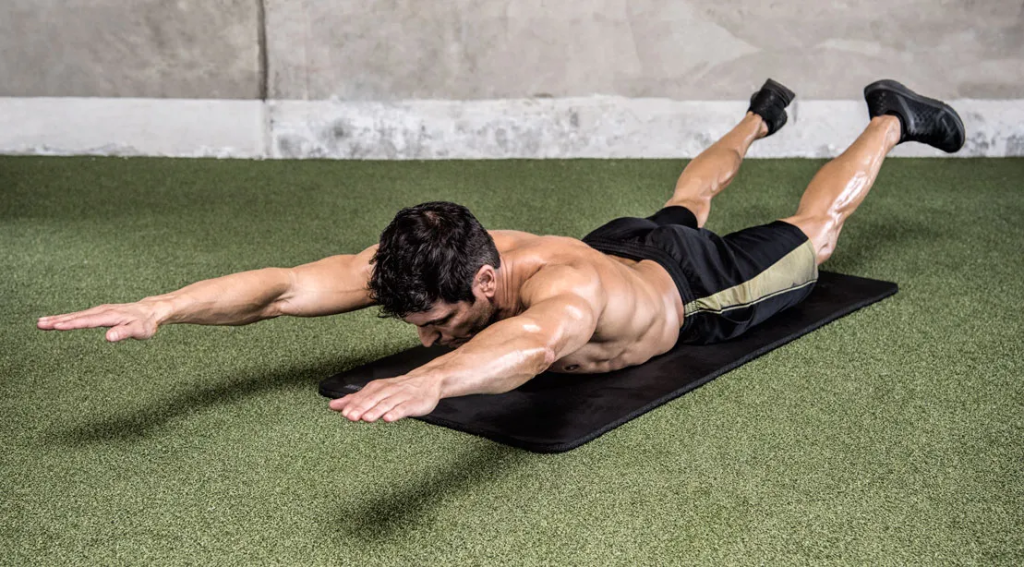
Why it works: A powerful bodyweight move that strengthens the entire lower back, glutes, and core, improving spinal alignment and stability.
How to do it:
- Lie face down, arms extended.
- Lift arms, chest, and legs off the ground.
- Hold for 20–30 seconds, then release.
Why it’s great: No equipment needed—perfect for home workouts or as a warm-up.
6. Lat Pulldowns

Why it works: Lat pulldowns mimic the motion of pull-ups and directly target your latissimus dorsi, helping to broaden your back and improve your posture instantly.
How to do it:
- Sit at a cable machine with a wide bar.
- Pull the bar down to your upper chest.
- Pause, then return slowly.
Form fix: Don’t lean too far back—keep the movement controlled for maximum gains.
7. Reverse Flys
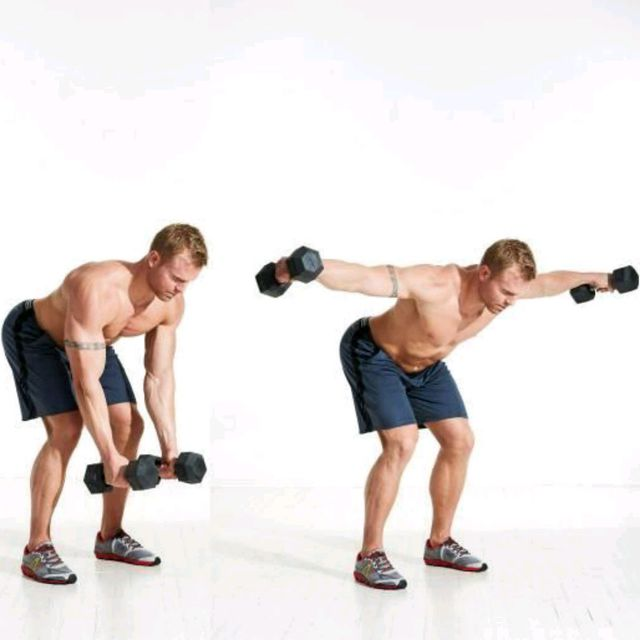
Why it works: Reverse flys focus on your rear delts and upper back muscles, combating forward-rolled shoulders caused by phones, desks, and daily stress.
How to do it:
- Use dumbbells or cables.
- Bend at the hips with a neutral spine.
- Raise arms out to the sides until they’re parallel to the ground.
Key tip: Use lighter weights to maintain good form and avoid using momentum.
8. Seated Cable Rows
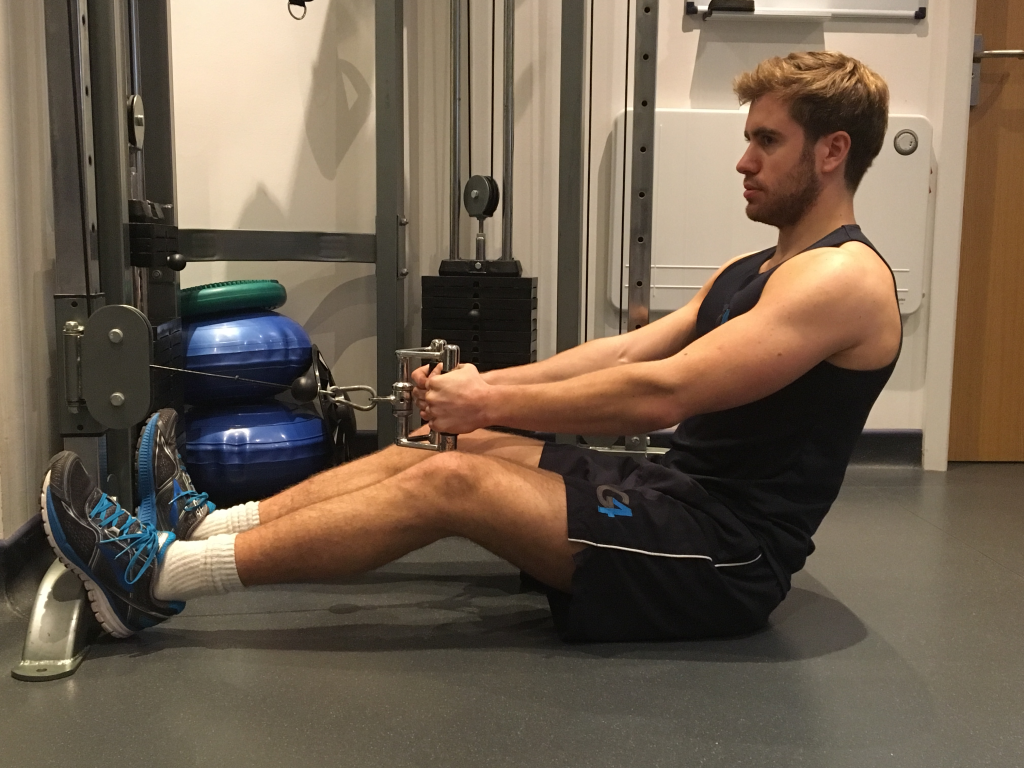
Why it works: This classic gym move trains the mid-back and rhomboids, which are responsible for retraction of the scapula—key for standing tall and confident.
How to do it:
- Sit with feet braced and grab a close-grip handle.
- Pull towards your midsection, squeezing your shoulder blades.
- Release with control.
Pro tip: Avoid overextending your torso—focus on the muscle contraction.
9. Bird-Dog
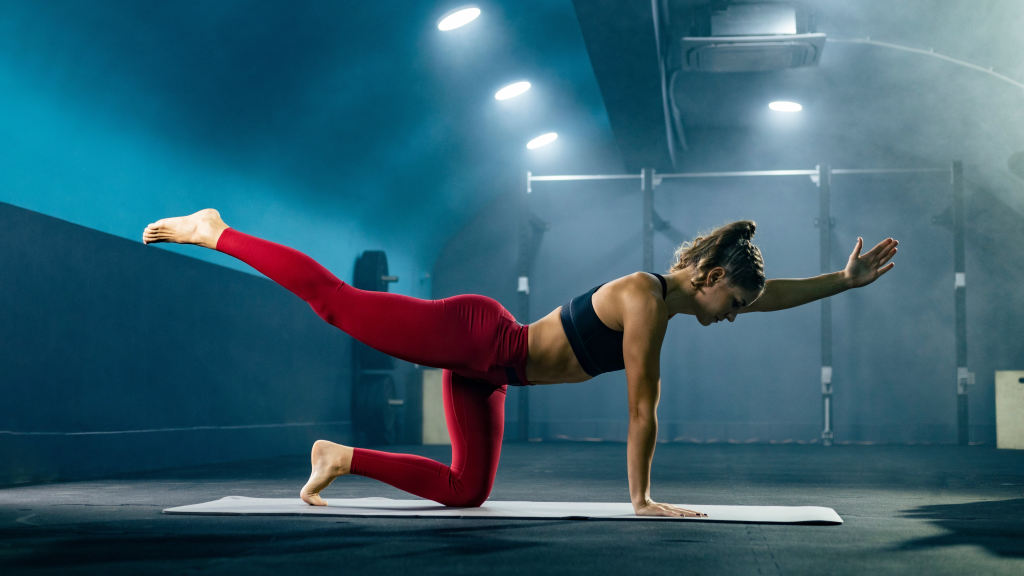
Why it works: This stability-enhancing core and lower back exercise promotes spinal alignment and helps build a strong, posture-supporting foundation.
How to do it:
- Get into a tabletop position.
- Extend one arm and the opposite leg simultaneously.
- Hold for a few seconds, switch sides.
Why it matters: A strong core and back together prevent postural imbalances that lead to discomfort or injury.
Bonus: Stretch + Strength = Perfect Posture
It’s not just about strength—you also need flexibility. Incorporate spinal mobility drills, chest stretches, and foam rolling to counteract tightness from daily life.
Try these:
- Chest openers with a foam roller
- Cat-Cow spinal stretches
- Wall angels for shoulder mobility
1-Week Back Exercise Plan for Men
Goal: Improve Posture • Build Strength • Boost Confidence
| Day | Workout Focus | Exercises |
|---|---|---|
| Day 1 – Strength & Posture | Compound Lifts & Bodyweight | – Deadlifts (4×8) – Bent-over Rows (3×10) – Superman Hold (3x30s) – Cat-Cow Stretch (3×10) |
| Day 2 – Active Recovery | Mobility & Core | – Bird-Dog (3×12/side) – Cobra Stretch (3x30s) – Standing Wall Angels (3×10) – Plank (3x30s) |
| Day 3 – Pull Power | Pull Movements | – Pull-Ups or Lat Pulldown (3×8) – Dumbbell Shrugs (3×12) – Face Pulls (3×15) – Doorway Chest Stretch (3x30s) |
| Day 4 – Recovery & Posture Reset | Flexibility + Postural Flow | – Child’s Pose (3x30s) – Seated Forward Fold (3x30s) – Shoulder Blade Squeeze (3×10) – Deep Diaphragmatic Breathing (5 min) |
| Day 5 – Back Focus Strength | Back & Core Strength | – One-Arm Dumbbell Row (3×10/side) – Resistance Band Rows (3×12) – Reverse Flys (3×12) – Bird-Dog Hold (3x30s/side) |
| Day 6 – Full Posture Combo | Mix of Strength + Stability | – Superman Lifts (3×15) – Cable Face Pulls (3×12) – Wall Angels (3×10) – Plank with Shoulder Taps (3×10/side) |
| Day 7 – Rest & Reflect | Total Recovery | – Light stretching – Foam rolling (upper back, lats) – Track progress: posture, confidence, photos |
Tips:
- Warm-Up: Always start with 5 minutes of dynamic stretches or light cardio.
- Cool-Down: End each session with 5 minutes of static stretching focused on the chest, shoulders, and back.
- Consistency > Intensity: Prioritize form and habit over lifting heavy.
- Hydration & Nutrition: Support muscle recovery and energy with a proper diet.
Final Thoughts: Confidence Starts with a Strong Back
Back strength does more than just improve posture—it changes how you move, breathe, and appear to the world. By adding these 9 exercises to your routine 2–3 times a week, you’ll not only reduce back pain and stiffness but naturally walk taller, feel stronger, and project greater confidence in every room you enter.
Your back is your backbone—treat it like your superpower.
Frequently Asked Questions (FAQs)
How often should I train my back for better posture?
For optimal results, aim to train your back 2–3 times per week. This frequency allows you to build strength while giving your muscles time to recover and grow.
Can these exercises help reduce back pain?
Yes, many of these exercises—especially Superman Holds, Bird-Dogs, and Face Pulls—strengthen the muscles that support your spine, helping to alleviate or prevent pain caused by poor posture or weak muscles.
Do I need equipment for these exercises?
While some exercises like deadlifts, rows, and lat pulldowns require gym equipment, you can still get great results using bodyweight moves (e.g., Bird-Dogs, Supermans) and resistance bands at home.
What’s the best back exercise for beginners?
Bird-Dog and Superman Holds are great beginner-friendly options. They improve posture and strengthen the spine without requiring weights or advanced skills.
How long does it take to see posture improvement?
With consistent training, most people begin noticing visible posture changes in 4–6 weeks. Confidence and body awareness can improve even sooner.
Can bad posture be corrected just by doing back exercises?
Back exercises play a crucial role, but posture correction also involves stretching tight muscles (like the chest and hip flexors), maintaining ergonomic habits, and being mindful of how you sit and stand throughout the day.
Are back workouts safe for people with desk jobs or sedentary lifestyles?
Absolutely. In fact, people with sedentary jobs benefit the most from back training. These exercises counteract the effects of sitting all day and help restore natural spinal alignment.
Can these exercises build a more muscular back too?
Yes. In addition to improving posture, exercises like deadlifts, rows, and pull-ups build muscle mass and definition, giving your upper body a broader, stronger appearance.
Should I consult a professional before starting these exercises?
If you have any history of back injuries or chronic pain, it’s wise to consult a doctor or physical therapist. Otherwise, most healthy individuals can begin with bodyweight and light resistance safely.





